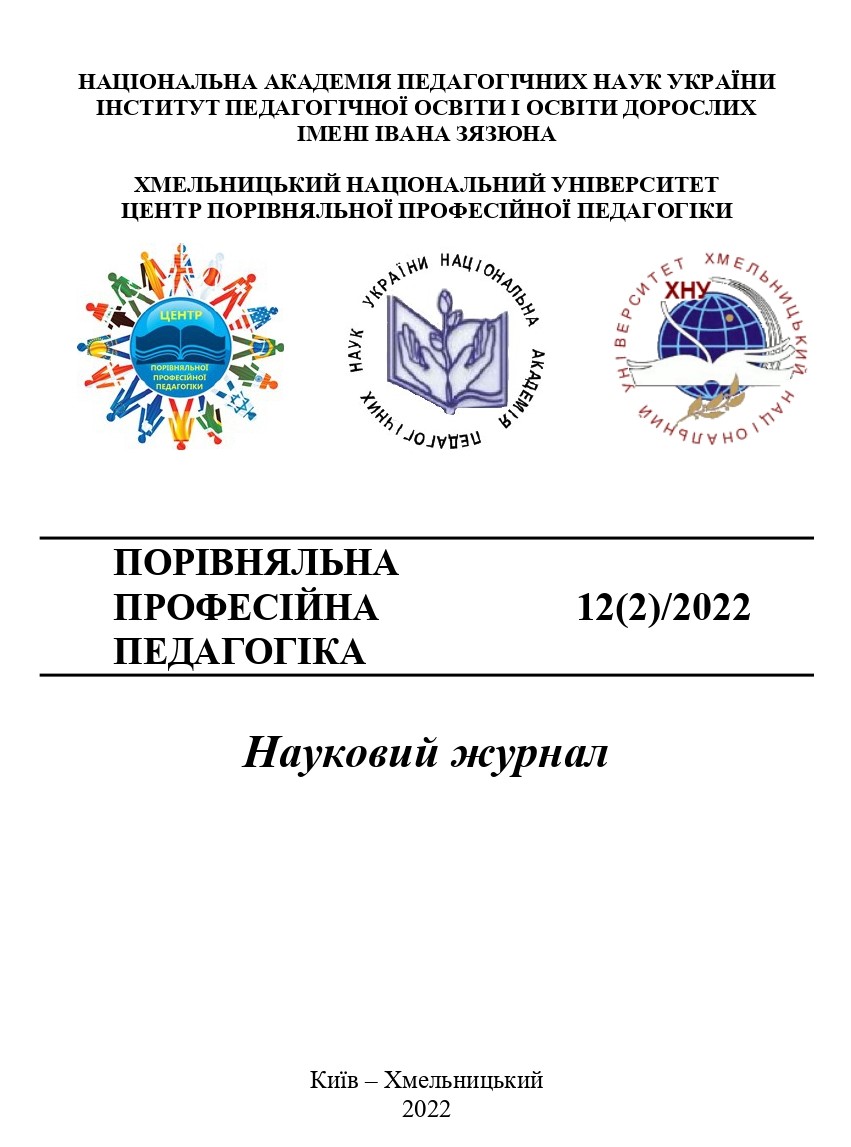PECULIARITIES OF PROFESSIONAL TRAINING IN APPLIED LINGUISTICS AT CANADIAN UNIVERSITIES (CARLETON UNIVERSITY)
DOI:
https://doi.org/10.31891/2308-4081/2022-12(2)-11Keywords:
Applied Linguistics, professional training, Carleton University, Canada, Bachelor's degree program, Master's degree programAbstract
The article describes the history of Applied Linguistics development. It is noted that the field of Applied Linguistics not only focuses on native, foreign and second language acquisition, but also examines how language interacts with other areas such as the media and legislation. The programs for training specialists in Applied Linguistics in the leading institutions of higher education in Canada are analyzed. In particular, attention is focused on Carleton University. Bachelor's and Master's programs in Applied Linguistics are studied. A special feature of Carleton University Bachelor’s degree program is that students have the opportunity to choose between a 4-year or 3-year program of study to obtain a degree. In addition, at Carleton University, you can combine a specialization in Applied Linguistics and Discourse Studies with an additional one in modern language studies: American Sign Language, German, Italian, Japanese, Chinese, and Spanish. A feature of Applied Linguistics programs for third- and fourth-year students is the option to choose an accelerated study program at Carleton University. Master’s degree program in Applied Linguistics, conditions and criteria for admission are described and analyzed. It is found out that there are three possible ways to complete the Master's program in Applied Linguistics and Discourse Studies: writing a thesis, a research essay or a coursework paper. It is noted that students are first registered for coursework, but at the end of the first year of the master's program they must submit a proposal for writing a research essay or thesis. It is determined that after completing a master’s level of education, a student has the opportunity to continue their studies by enrolling in Carleton University PhD program, which is unique in North America due to its innovative combination of Applied Linguistics and Discourse Studies.
References
Brock University (2022). Undergraduate programs. Retrieved from: https://brocku.ca/social-sciences/applied-linguistics/undergraduate-programs/
Carleton University (2022). BA in Applied Linguistics and Discourse Studies. Retrieved from: https://carleton.ca/slals/applied-linguistics-discourse-studies/ba-program/
Carleton University (2022). MA in Applied Linguistics and Discourse Studies. Retrieved from: https://carleton.ca/slals/applied-linguistics-discourse-studies/ma-program/
Carleton University (2022). School of Linguistics and Language Studies. Retrieved from: https://carleton.ca/slals/
Concordia University (2022). Applied Linguistics (MA). Retrieved from: https://www.concordia.ca/academics/graduate/applied-linguistics.html
De Bot, K. (2015). A history of applied linguistics: From 1980 to the present. London and New York: Routledge.
McKinley, J., & Rose, H. (Eds.). (2017). Doing research in applied linguistics: Realities, dilemmas and solutions. London and New York: Routledge.
Starfield, S. (2015). Ethnographic research. In B. Paltridge & A. Phakiti (Eds.), Research methods in applied linguistics: A practical resource (pp. 137–152). London: Bloomsbury.
Sterling, S., & Gass, S. (2017). Exploring the boundaries of research ethics: Perceptions of ethics and ethical behaviors in applied linguistics research. System, 70, 50–62.
Tao, J., Shao, G., & Gao, X. (2017). Ethics-related practices in internet-based applied linguistics research. Applied Linguistics Review, 8, 321–354.
University of Victoria (2022). MA in Applied Linguistics. Retrieved from: https://www.uvic.ca/humanities/linguistics/graduate/programs/ma-applied/index.php


